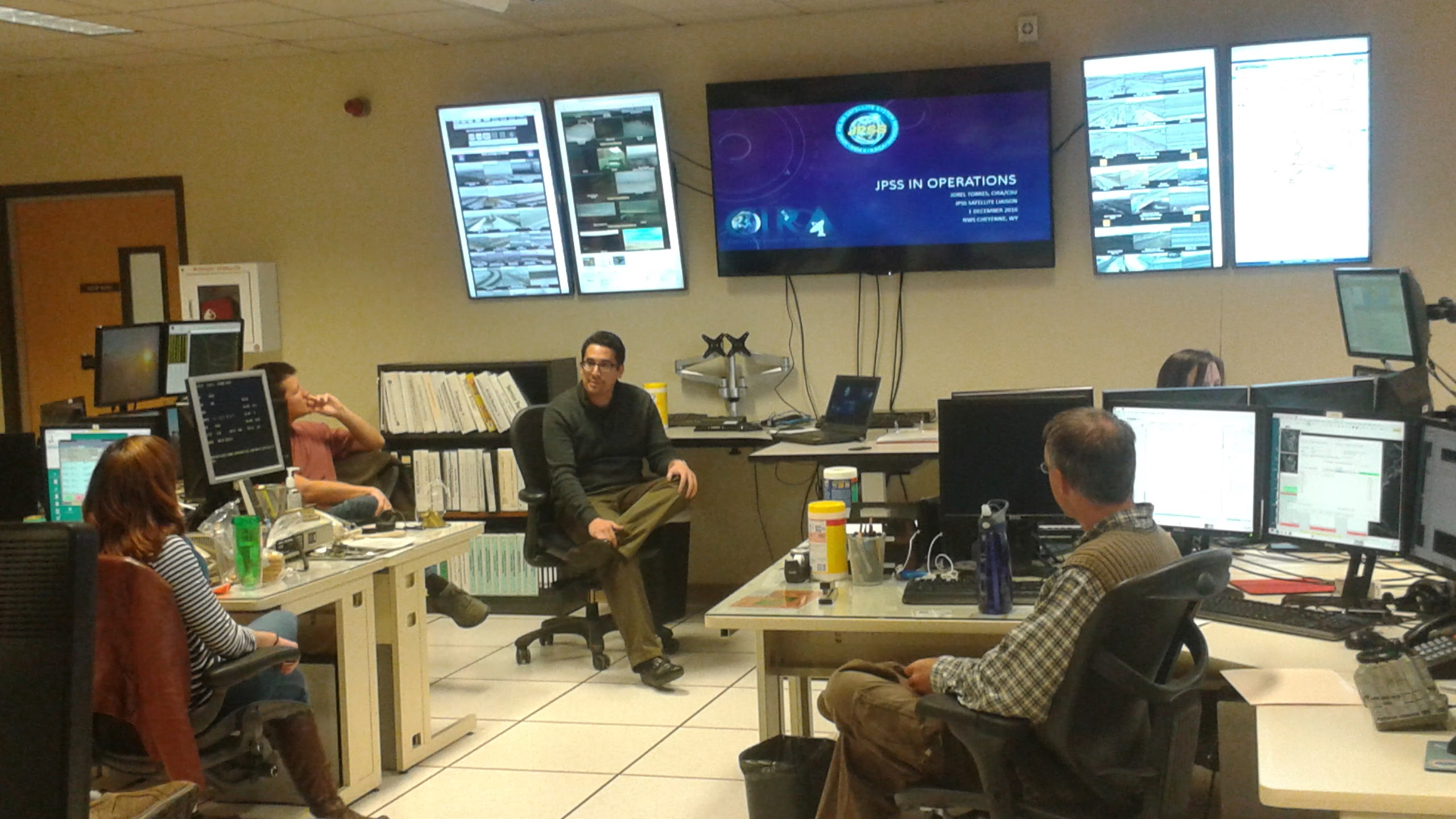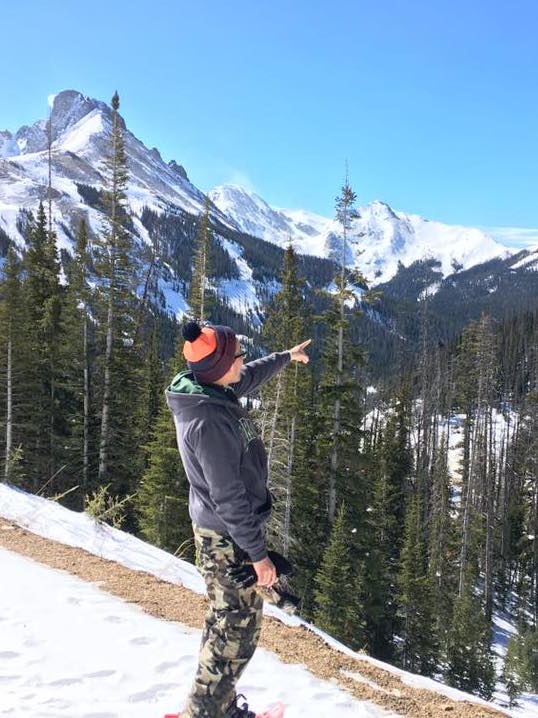
Jorel Torres speaking about JPSS products to National Weather Service (NWS) Science and Operations Officers (SOO) at the SOO Development Course in Norman, Oklahoma. Image credit: Courtesy of Jorel Torres
Wild Weather Jobs: Satellite Liaison
When we launch new weather satellites, they're filled with the latest high-tech features. For example, instruments on the newest satellite in the Joint Polar Satellite System (JPSS) will improve weather forecasts and monitor oceans and plant health.
But satellites orbit far above Earth. How does your local weather forecaster stay up to date with all of the latest gizmos and gadgets up there? That's where satellite liaisons come in.We recently spoke with Jorel Torres, a satellite liaison for the JPSS satellites, about what it's like to do this work.
Inspiration from Hollywood
Torres says that he has always been fascinated with the weather, especially severe and winter weather. But, one event in particular spurred his interest in a weather career. "If I had to state what started it all, it was seeing the famous movie 'Twister' back in the mid-1990's," says Torres, a JPSS Satellite Liaison for the Cooperative Institute for Research in the Atmosphere (CIRA) at Colorado State University.
However, Torres didn't become a storm chaser like the characters in the movie (although he does occasionally chase storms). Instead, he earned an undergraduate degree in the Atmospheric Sciences at the University of Louisiana-Monroe. He also earned a master's degree in Atmospheric and Environmental Sciences at South Dakota School of Mines and Technology. There, he studied snowfall observations on the ground and how that information compared with satellite observations.
A typical day

Torres speaking to NWS forecasters at the Weather Forecast Office (WFO) – Cheyenne, WY. Image credit: Courtesy of Jorel Torres
On an average day, Torres says he does a number of things to help weather researchers and weather forecasters share information with one another. He trains forecasters from the National Weather Service (NWS) to help them understand all of the things that new weather satellites--such as JPSS--can do. Torres then relays the feedback from forecasters back to researchers who work with the satellite data. This allows the researchers to improve the capabilities of the satellite.
"Also, as part of my job, I also travel frequently across the United States to attend meteorological conferences and meetings, and assist with JPSS short courses and workshops," Torres says. "These trips are opportunities to meet with forecasters, scientists, and other personnel who are interested in using JPSS data," he adds.
When work is done for the day, Torres says he enjoys sports and spending time outdoors. "My hobbies range from going to Colorado Rockies and Denver Broncos games, to attending concerts, art and science museums, and hiking, snowboarding and snowshoeing in the nearby Rocky Mountains," he says.

In his spare time, Torres enjoys snowshoeing in the Rocky Mountains. Image credit: Courtesy of Jorel Torres
The best part
Meeting and working with a wide variety of different people is Torres's favorite part of the job. "I really like having the ability to work with forecasters, and at the same time, work with the meteorology researchers," he says. "I get to learn from researchers about all of the new capabilities of the satellites they're working with, and I help forecasters understand how they can use those capabilities to improve weather forecasts."
Tips on entering this field
"If students are interested in the meteorological field while completing their undergraduate degrees, they should also focus on computer science," he says. "We live in a world where technology is constantly changing and evolving. Learning a variety of computer languages will benefit students when they are applying for jobs and graduate schools."




